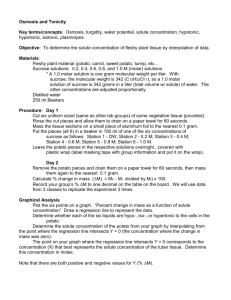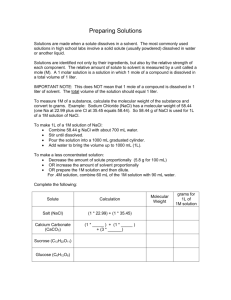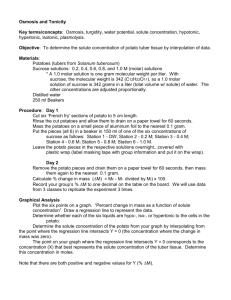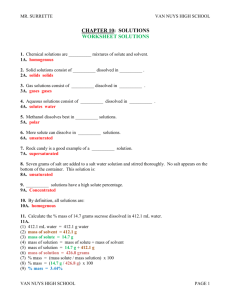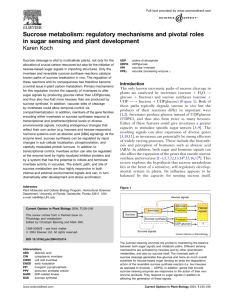Unit 5 Math Practice
advertisement
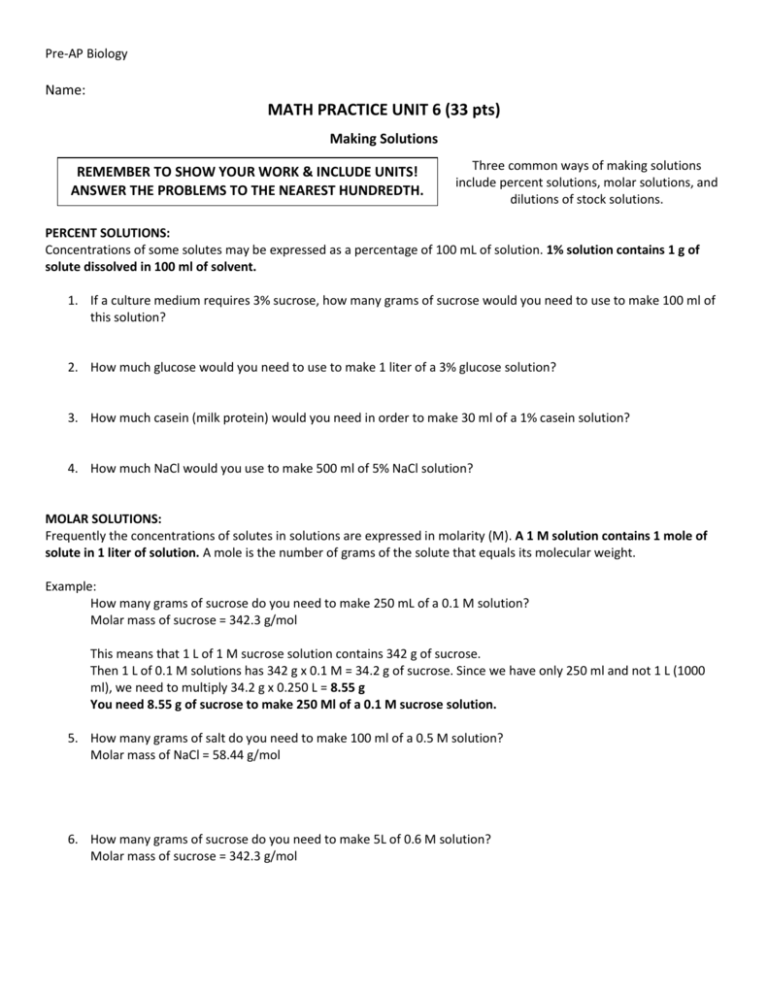
Pre-AP Biology Name: MATH PRACTICE UNIT 6 (33 pts) Making Solutions REMEMBER TO SHOW YOUR WORK & INCLUDE UNITS! ANSWER THE PROBLEMS TO THE NEAREST HUNDREDTH. Three common ways of making solutions include percent solutions, molar solutions, and dilutions of stock solutions. PERCENT SOLUTIONS: Concentrations of some solutes may be expressed as a percentage of 100 mL of solution. 1% solution contains 1 g of solute dissolved in 100 ml of solvent. 1. If a culture medium requires 3% sucrose, how many grams of sucrose would you need to use to make 100 ml of this solution? 2. How much glucose would you need to use to make 1 liter of a 3% glucose solution? 3. How much casein (milk protein) would you need in order to make 30 ml of a 1% casein solution? 4. How much NaCl would you use to make 500 ml of 5% NaCl solution? MOLAR SOLUTIONS: Frequently the concentrations of solutes in solutions are expressed in molarity (M). A 1 M solution contains 1 mole of solute in 1 liter of solution. A mole is the number of grams of the solute that equals its molecular weight. Example: How many grams of sucrose do you need to make 250 mL of a 0.1 M solution? Molar mass of sucrose = 342.3 g/mol This means that 1 L of 1 M sucrose solution contains 342 g of sucrose. Then 1 L of 0.1 M solutions has 342 g x 0.1 M = 34.2 g of sucrose. Since we have only 250 ml and not 1 L (1000 ml), we need to multiply 34.2 g x 0.250 L = 8.55 g You need 8.55 g of sucrose to make 250 Ml of a 0.1 M sucrose solution. 5. How many grams of salt do you need to make 100 ml of a 0.5 M solution? Molar mass of NaCl = 58.44 g/mol 6. How many grams of sucrose do you need to make 5L of 0.6 M solution? Molar mass of sucrose = 342.3 g/mol Pre-AP Biology 7. How many grams of fructose do you need to make 150 ml of 1 M solution? Molar mass of fructose = 180.16 g/mol DILUTION OF STOCK SOLUTION: To make a dilution of a stock solution of known concentration, use the formula C1V1 = C2V2 where C1 is the initial concentration, C2 is the final concentration, V1 is the initial volume, and V2 is the final volume. Example: If you dilute 174 ml of a 1.6 M solution of LiCl to 1 L, what is the new concentration of the solution? Here is what is given to you: V1 = 174 ml V2 = 1 L C1 = 1.6 M C2 = ? – you need to solve for C2 Remember: 174 ml = 0.174 L C1V1 = C2V2 C2 = C2 = C1V1 V2 1.6 M x 0. 174 L 1L C2 = 0.28 M 8. Assume you have 200 mL of 2 M NaOH. What volume of the solution would you need to make 4 M NaOH? 9. You have 3 L of 1.2 M KNO3. What molarity will the potassium nitrate solution be if you dilute it to 10 L? 10. The stock solution of NaF is 1 M. You diluted it and made 250 ml of 0.5 M NaF. What was the volume of the stock solution before your dilution? 11. By diluting a stock solution, you made 2 L of 0.2 M sucrose solution. Your stock solution had a volume of 500 ml. What was the original concentration of the stock solution?


